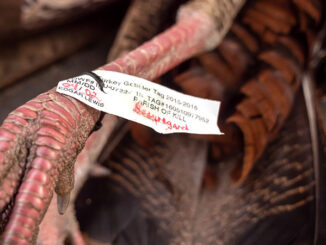
Unusual Natchitoches Parish deer was in full velvet on Nov. 1
This is a deer story all about testicles.
Family jewels, if you prefer.
More precisely, it’s a story about a big 10-point buck killed in full velvet on Nov. 1 in Natchitoches Parish that seemingly didn’t have any.
“There was nothing hanging,” said Casey Messenger, whose son Nicholas drilled the deer with a Browning .30-06 at about 70 yards that drizzly Sunday afternoon. “It wasn’t like it was ripped and there was skin hanging. Either he was born without it, or whatever did it made a clean cut.
“I’ve helped work cattle before, and this thing looked just like a steer calf that had been castrated at birth. There was just a small little sack there with nothing in it. Until we got him on the skinning rack, I just assumed they were really small. But when I skinned him, there was nothing in him at all. It was just a drawn up little spot.”
But the Messengers had been seeing the buck on their trail cameras since June, and although they hadn’t noticed its physical anomaly, they had watched the deer grow its impressive rack all summer long. He estimated the buck would score in the high-130s or mid-140s when all was said and done.
“Everything I’ve read about deer like that says they’re kind of like a doe,” he said. “They either run by themselves or stay in a family herd. We hunt this area heavily, and we have never seen anything here in full velvet like that.”
But early this fall, the big buck simply vanished, he said.
“Once a few other bucks started dropping their velvet, he just completely went underground on me,” Messenger said. “As soon as I started seeing smaller bucks with development around mid-September, I didn’t see him anymore until Nicholas killed him.”
Scott Durham, a biologist director with the Wildlife Division for the Louisiana Department of Wildlife and Fisheries, said although cases like this are unusual, they do happen.
“You see anatomic abnormalities every year, just like in people,” Durham said. “Sometimes development is delayed or hampered by genetics, or by environmental factors or from something that happened in utero.”
Durham said this year he’s seen lots of late velvet shedding, a process in which testosterone plays a key role.
“Testosterone is not really about antler development — that’s more about skeletal growth and nutrition. But when those antlers start hardening off and shedding, that’s when you get that surge of testosterone that causes that,” he said. “Testosterone cause those antlers to harden up and shed the velvet.”
After seeing a picture of Messenger’s buck and its rack, Durham suspected a lack of testosterone likely wasn’t responsible for the deer remaining in velvet on Nov. 1.
“Sometimes the testicles can be undescended, just like in humans,” he said. “They just remain up in the abdominal cavity.”
So exactly what happened below the buck’s belt might remain a mystery. Messenger suspects the deer, which he aged at 4 ½ years, could have been injured during the rut last year.
“So he shed that set of antlers, and grew this set and stayed in velvet,” Messenger said. “That was my best story that I could come up with.”
Regardless of what happened, the big buck will always be a fond memory for Nicholas, 17, a senior at St. Mary’s Catholic School in Natchitoches. He was hunting with his buddy Drake Hale in a double-box stand when the big buck walked out of the CRP with a group of does and headed into a bean field.
“He’s always been my little deer hunter, but he’s never had the patience to hunt,” Casey Messenger said. “When my daughter Maci killed that big deer last year, he pretty much stopped deer hunting altogether and started duck hunting.
“But he finally got himself a little redemption.”


